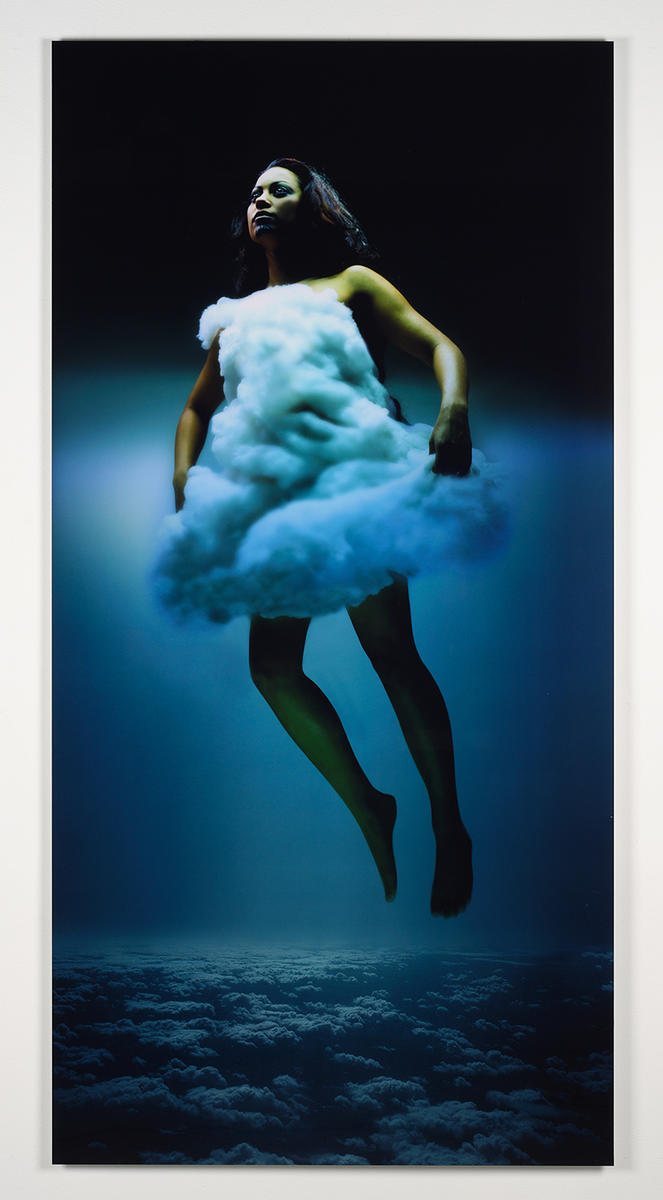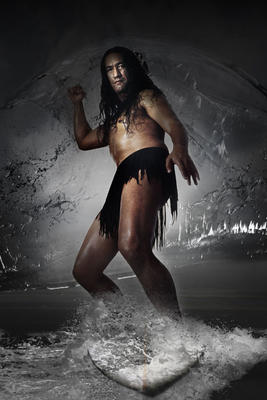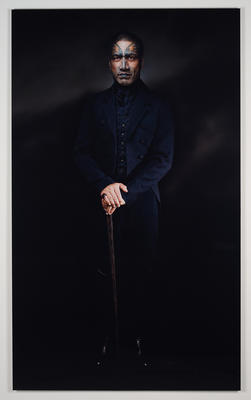Digital Marae: Hinepukohurangi
-
Lisa Reihana
b.1964
Ngā Puhi, Māori
Ngāti Hine, Māori
Ngāi Tu, Māori

Title
Digital Marae: Hinepukohurangi
Details
| Production Date | 2001 |
|---|---|
| Collection(s) | Collection Govett-Brewster Art Gallery, New Plymouth. Acquired with assistance from the Govett-Brewster Foundation. |
| Accession Number | 2008/2 |
| Media | Colour digital print on aluminium |
| Measurements | 2000 x 1000mm |
About
Lisa Reihana has contributed in powerful ways to multimedia and screen culture in New Zealand. In Digital Marae, one of her major ongoing projects inaugurated in 1995, Reihana explores Māori ancestral figures traditionally found on the marae, the central site of any traditional Maori community life where people congregate to discuss and debate local affairs and conduct ceremonies. The marae is imbued with strong customs and sense of place. Reihana’s life-size photographs are a contemporary take on pouwhenua, the wooden carvings found lining the interior of the wharenui or meeting house.
With the lyricism of magic realism, Reihana’s digital photographs seamlessly fuse traditional and contemporary motifs and offer new representations of Māori ancestral figures that convey the complex narratives of Māori mythology to make it accessible to global audiences. Furthermore, by incorporating varied identities Reihana’s Digital Marae echoes the desire for an inclusive contemporary marae that would interpret mythology and re-examine Maori identity itself. The photographs Dandy, Hinepukohurangi, Maui and Marakihau, all produced in 2007, reflect a significant moment in the development of Reihana’s Digital Marae, with the inclusion of male and takatāpui — a devoted partner of the same sex — and cross-gendered figures, expanding on her existing repertoire of arrestingly beautiful female forms.
The play of colour, texture, movement, costumes and props confer a distinctive character and feeling to each subject and the worlds they inhabit. The glossy finish of the digital print mounted in aluminium mimics their highly polished surfaces. Reihana sees these figures as sculptures, as physical photographic carvings representing the ancestors formally carved in pounamu and wood.
Reihana describes each of the figures as follows:
“Hinepukohurangi is the mist maiden [from Ngāi Tūhoe lore] who descends to earth in the evening settling on Te Urewera Ranges as a mist overnight; disappearing at dawn. She fell in love with Uenuku, a human, so she can only be with him at night. Uenuku’s tribe tease him about this fabled beauty because they’ve never seen her. He decides to prove Hinepukohurangi exists by blackening out the windows and door of their house so she sleeps in. She is unaware that the sun has risen until her younger sister calls to her … Hinepukohurangi realises Uenuku has tricked her, and vows never to return to him. From an ecological perspective their story warns that occurrences should happen in the right order. It demonstrates whānau (family) looking out for each other. It’s also a warning about ego; Uenuku had been informed that the relationship had rules; their time for privacy was only during darkness.”


